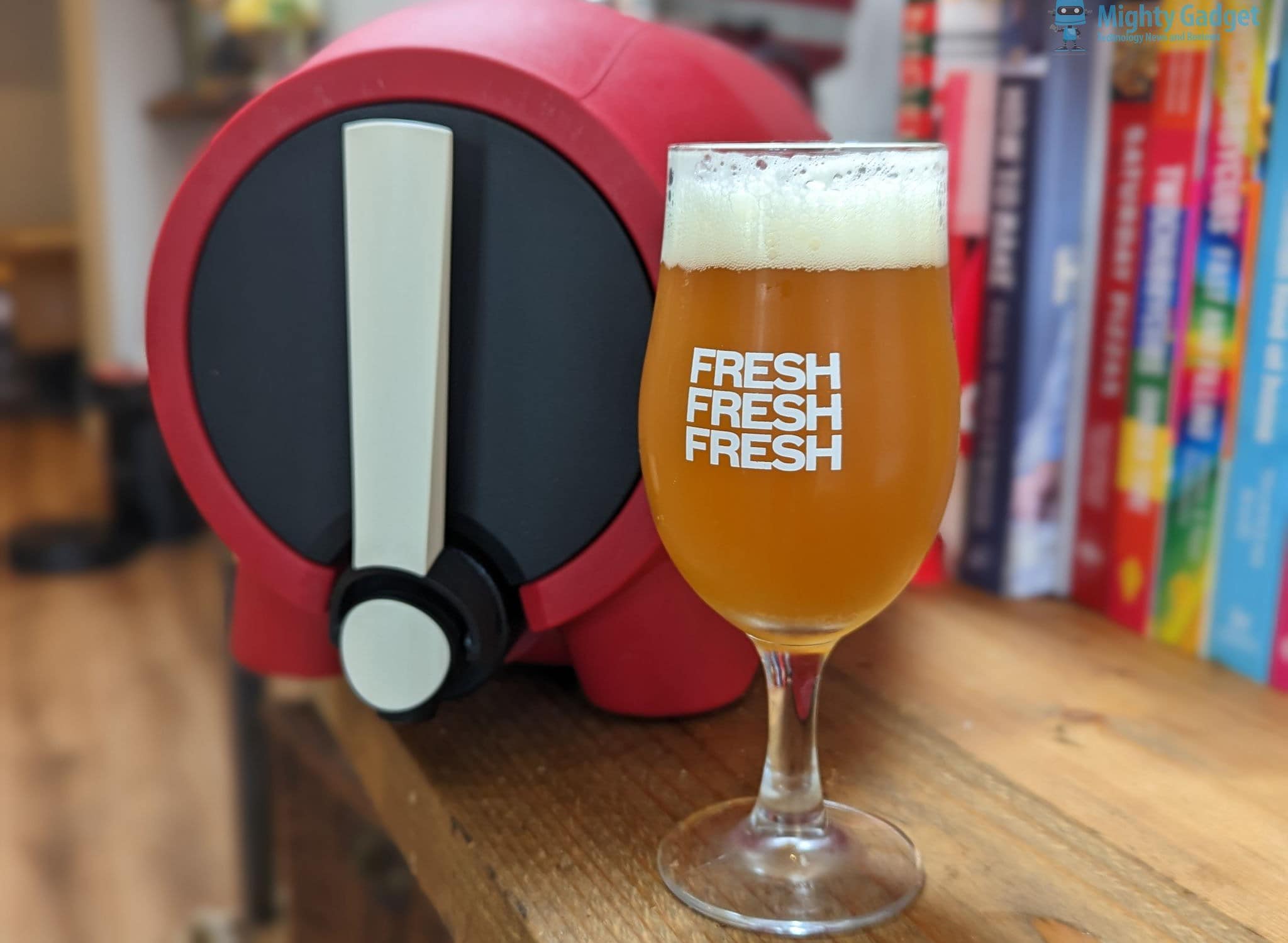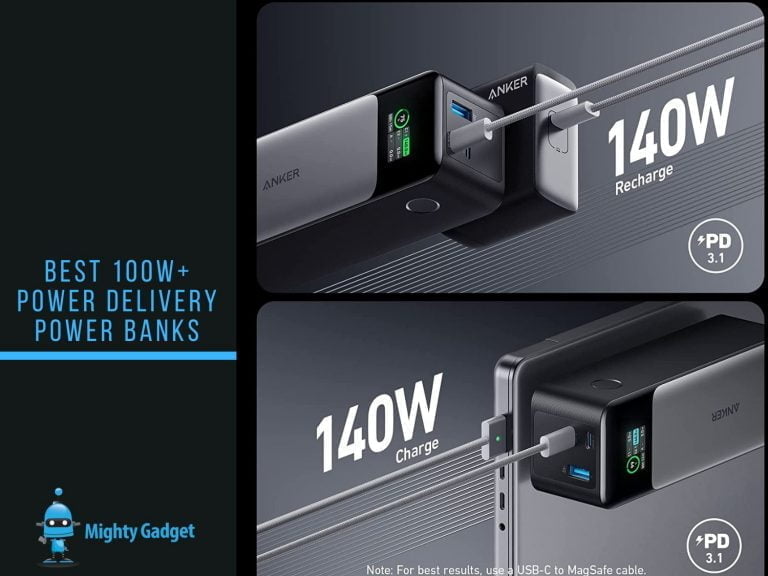Any links to online stores should be assumed to be affiliates. The company or PR agency provides all or most review samples. They have no control over my content, and I provide my honest opinion.
I have previously reviewed the Pinter and Pinter 2, and I have been impressed with how easy it is to brew your own beer and the quality of the beer.
The Pinter 2 was only announced in August 2022, with my review back in December, so it was a bit of a surprise to me that a new Pinter 3 was launched just a few months later.
Pinter 3 vs Pinter 2
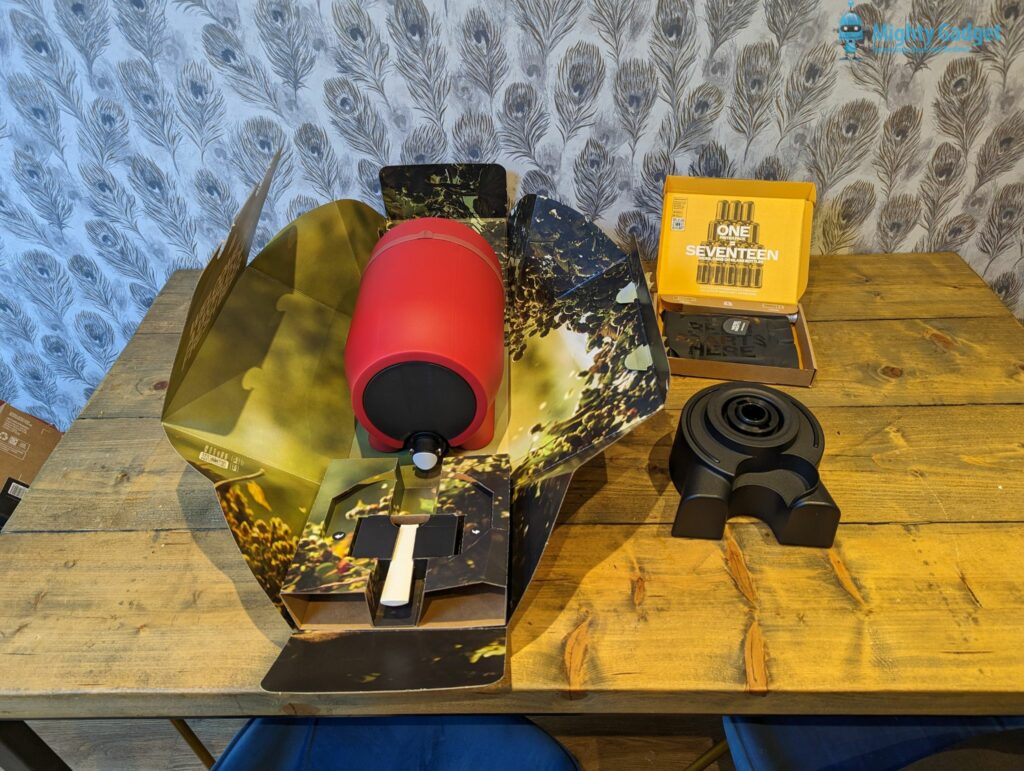
- The new Active Pour Tap puts you in control of the perfect pour – it adjusts pressure inside the Pinter 3 to deliver a pour that is clean, intuitive and completely satisfying. The tap can also be used with Pinter 2 to improve performance on previous models.
- The Pinter 3 is 45% lighter than the Pinter 2, making it much easier to use, particularly when full at 10-pint capacity;
- Finished in three stunning colours of deep grey, electric blue and rich red.
- Brewing dock has a new ergonomic design and will be made with recycled materials.
- My Pinter 2 was supplied with two nice glasses, these are no longer provided.
Beer Options & Cost vs Normal Home Brewing
The below list isn’t exhaustive, but it gives you an idea of the excellent range of beer that Pinter has available. They mix things up from time to time, when I reviewed the Pinter 2, they had a couple of collabs with the Yeastie Boys, which was a New Zealand IPA and a session IPA.
For this brew, I opted for Weiss Nights, which is a hefeweizen. Something a little different from the IPAs I have brewed before, and my partner likes this style of beer. I wish I had tried the Haus of Hops, though. That could be a good summer beer.
- Stars and Stripes (abv 4.5%): £17.99 – American pale ale
- Tropical Debate (abv 5.6%): £19.99 – Award winning NEIPA that uses a hopper
- Space Hopper (abv 7.0%): £17.99 – Double IPA
- Signature Brew Roadie Remixed (abv 4.3%): £22 – All night (Session?) IPA with hopper
- Weiss Nights (abv 4.6%): £17.99 – Hefeweizen
- Lost in Translation (abv 5.0%): £17.99 – Award winning brown ale
- Haus of Hops (abv 5.6%): £19.99 – Pilsner with hopper
- Dark Matter (abv 5.0%): £17.99 – Classic stout
- Bavarian Rhapsody (abv 4.8%): £17.99 – Dunkel
- Whole Nine Yard (abv 5.6%): £17.99 – Cloudy apple cider
As I have highlighted previously, home brewing with the Pinter is not exactly cost-effective compared to normal home brewing. When the original Pinter launched, the price of the beer was £10-£14 each that’s not risen to £18-£22.
For traditional homebrewing, you can pick up the Youngs Premium Ale Kit IPA for about £25. That being said, it’s about 10 years since I last did a homebrew with a homebrew kit, and the selection of beer available doesn’t appear to have ever changed, let alone improved. Pinter definitely has a superior selection of beer.
Of course, you could brew from scratch and make whatever style you want, which is even cheaper but significantly more time-consuming.
In my last review, I compared the price of a pint of Pinter vs Perfect Draft, which I worked out as about £5 per litre after you get £5 for a used keg. For Pinter, it worked out at around £3.5 per litre (for the £20 packs).
Supermarket beer varies wildly depending on offers, but you can normally buy craft beer at around £3.50 to £6 a litre.
Pinter 3 Design and Active Pour Tap
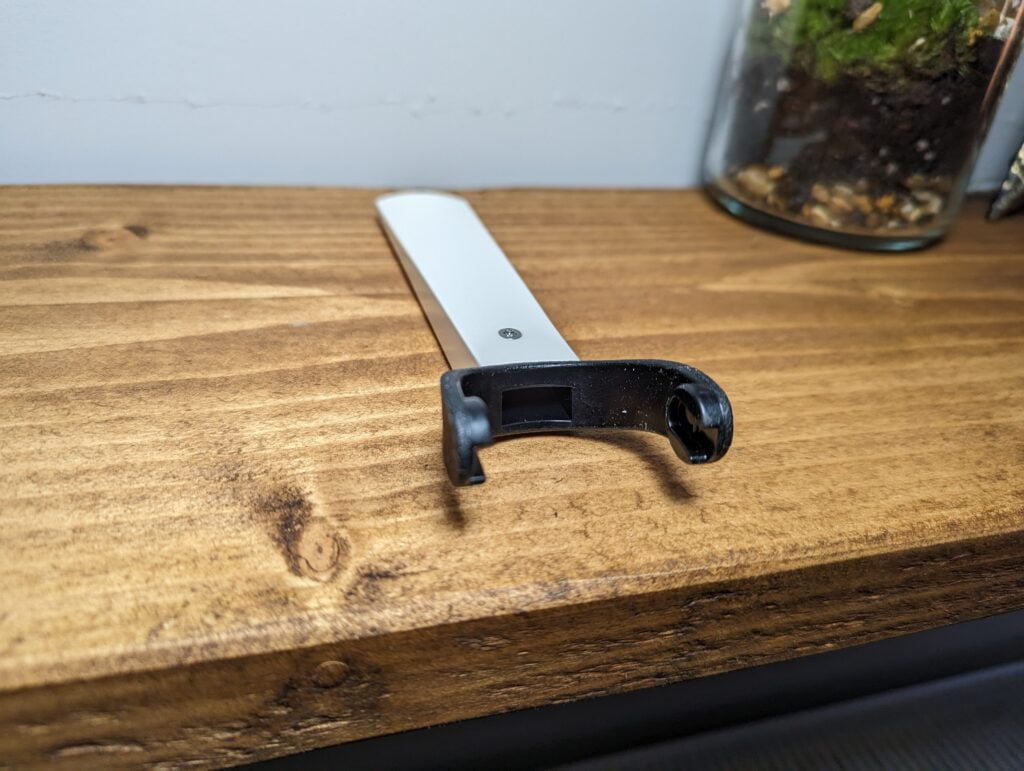
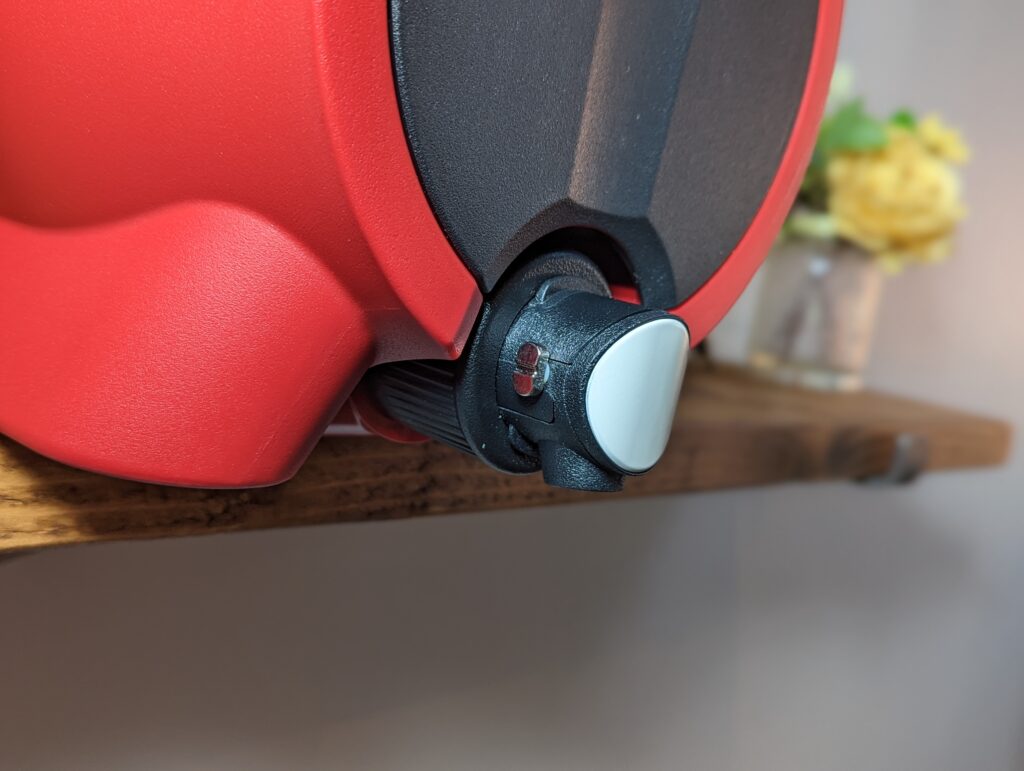
I gave my Pinter 2 to a friend as a Christmas present, so I don’t have comparison photos. The overall design of the Pinter 3 is largely the same as the Pinter 2, but they say it is 45% lighter, they also state that the brew dock is a new ergonomic design, but I can’t say I noticed much difference from memory.
The main difference is the tap. That’s much better, and you don’t have that little rubber band to lock the tap anymore. The tap slots downwards onto two mounting points, and the pouring mechanism feels much smoother than the older models which felt a bit clunky.
Pinter 3 App & Brewing
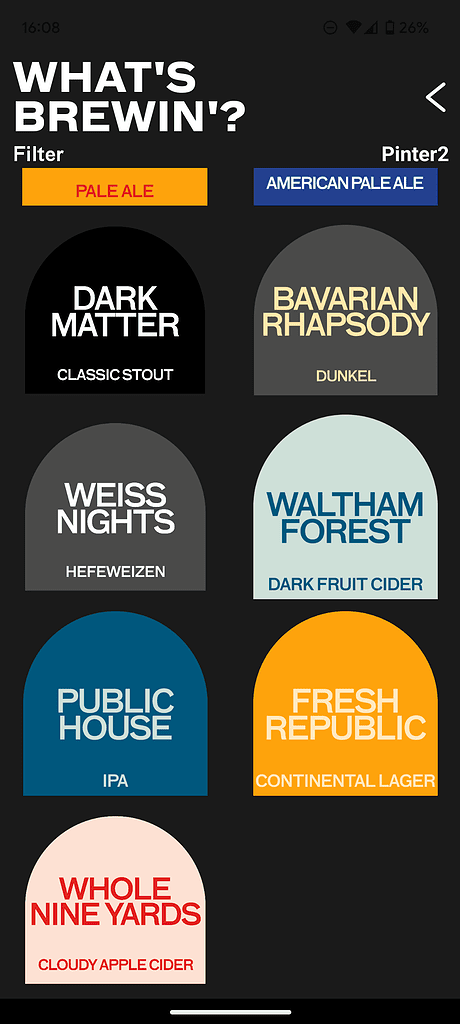
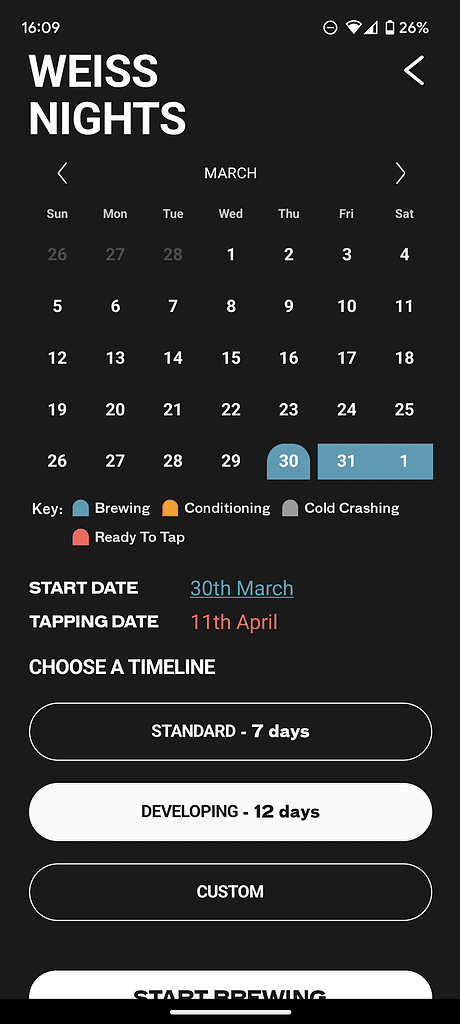

The brewing process is identical to the Pinter 2. You need to download the Pinter app and follow the step-by-step process, which includes videos. It makes the process very easy, but I wish there was a simplified static set of instructions either with PDF or HTML. With this being my third brew, I know roughly what the steps are, and it’s a bit annoying having to swipe for each step within the app.
As I have covered brewing in the past, I will just point out some of the highlights of the Pinter 3.
- The sediment settles into the brewing dock, which you then detach when you condition your beer. This creates about half a pint of wastage which seems quite efficient, and I haven’t noticed much, or any, sediment in the beer I pour.
- Pinter has a self-carbonation design with a dial on the rear to control the level of carbonation. Then each beer they sell has a recommended setting.
- The Pinter 2 introduced the hopper feature, which is an innovative port that allows you to add extra hops towards the end of the brew in a sterile manner.
- The Pinter seems to have an insulated design. The instructions don’t mention temperature ranges, but Pinter stat that 6-25 degrees will lead to successful results. When I used to homebrew in the 30l fermentation buckets, I always had to be careful with the temperatures because I often have a cold house.
- Now that I have used the Pinter a few times, it only takes maybe 15 to 20 minutes to do the brew. You basically just sterilise it, fill it with water, add the mix and yeast, shake it up, make sure your carbonation level is set correctly and then leave to ferment.
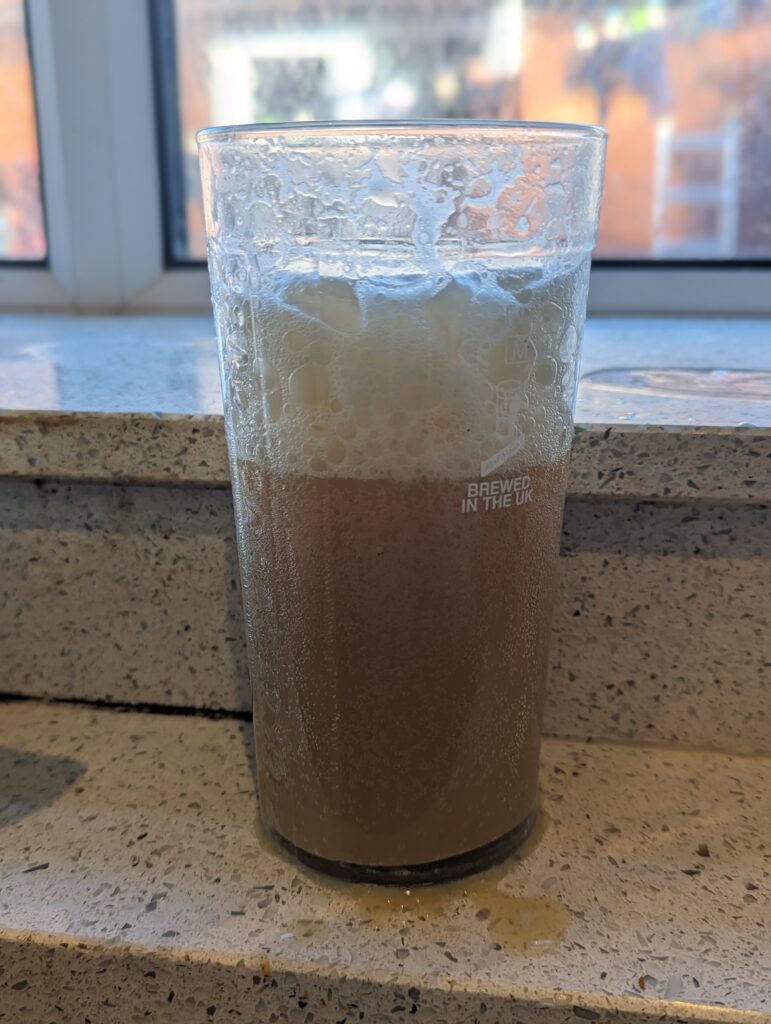
Pinter 3 Weiss Nights Pouring and Tasting
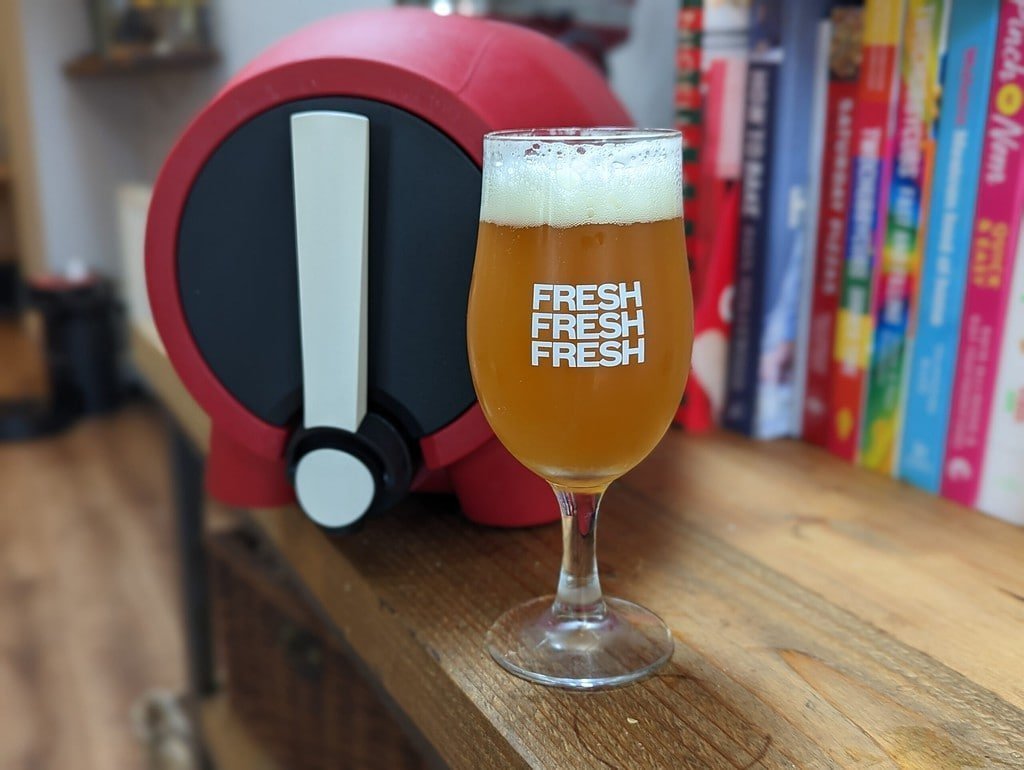
I messed up the timing of my brew for the Easter weekend and didn’t condition the beer for as long as I would like. Towards the end of the brew, I also realised I had knocked the carbonation dial down by mistake. I cranked it back up to 5, and it seemed to turn out good.
The end result was one of the best homebrew beers I have ever made. Hefeweizen isn’t even my favourite style of beer. I have been happy with all the Pinter beers, but I always find that homebrew just has something about it that’s not quite the same as professionally brewed beer. Even with the Winter Sun IPA, I brewed last time, it was an excellent home brew, and all my friends enjoyed it, but it still wasn’t quite as nice as something you might buy for the Perfect Draft.
However, that’s not the case with Weiss Nights, I’d be quite happy if someone had served me this in a pub.
The first couple of pints come out extremely lively, and relieving a bit of pressure by dialling the carbonation dial down a little and then back up may help with this. The active pour tap does seem to be a significant upgrade, the pouring mechanism feels smooth, and the beer flows out easily. With the Pinter 2 the beer seemed to trickle out a bit slowly.
Overall
The Pinter 3, with its active pour tap, is a good upgrade from the Pinter 2 and significantly better than the original Pinter. The tap is a big upgrade from the previous generations, which were poor in comparison.
If you use your Pinter a lot, then I’d say it is worth buying the tap, but at the same time, I appreciate that it is likely annoying to spend another £30 if you spent £130 on the Pinter 2 just a few months ago.
I stand by my criticisms of the beer price, but I am warming up to the idea of buying the refills. I think the Weiss Nights made me realise that the old home brews I used to make with premix kits were quite poor in comparison, and the selection of premix kits is limited and hasn’t changed much in years.
Like my older reviews, I still think Pinter is a superb option for anyone that is interested in trying out homebrewing beer.
Pinter 3 Homebrew Beer Review Rating
Summary
The Pinter 3, with its active pour tap, is a good upgrade from the Pinter 2 and significantly better than the original Pinter. The tap is a big upgrade from the previous generations, which were poor in comparison.
I still think the beer is overpriced, but I am coming around to the idea of continuing to use Pinter. The quality and range of beers available are excellent, and it only takes around 30 minutes to sterilise and mix the brew.
Overall
80%-
Overall - 80%80%
Pros
- Active pour tap is a big improvement
- Simple brewing process
- The range and quality of the beer is far superior to traditional premix homebrew kits
Cons
- I still think the beer is overpriced
I am James, a UK-based tech enthusiast and the Editor and Owner of Mighty Gadget, which I’ve proudly run since 2007. Passionate about all things technology, my expertise spans from computers and networking to mobile, wearables, and smart home devices.
As a fitness fanatic who loves running and cycling, I also have a keen interest in fitness-related technology, and I take every opportunity to cover this niche on my blog. My diverse interests allow me to bring a unique perspective to tech blogging, merging lifestyle, fitness, and the latest tech trends.
In my academic pursuits, I earned a BSc in Information Systems Design from UCLAN, before advancing my learning with a Master’s Degree in Computing. This advanced study also included Cisco CCNA accreditation, further demonstrating my commitment to understanding and staying ahead of the technology curve.
I’m proud to share that Vuelio has consistently ranked Mighty Gadget as one of the top technology blogs in the UK. With my dedication to technology and drive to share my insights, I aim to continue providing my readers with engaging and informative content.

